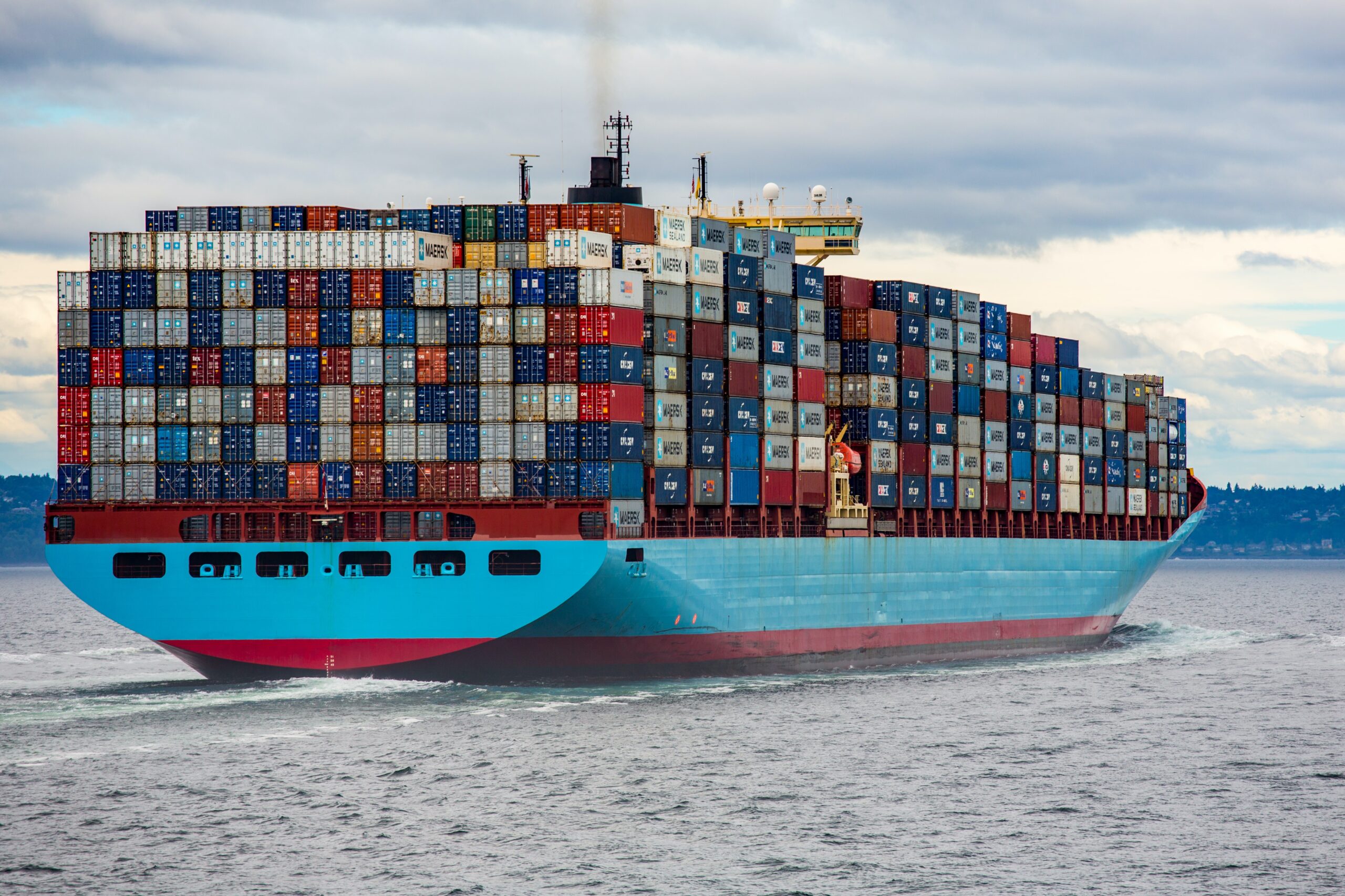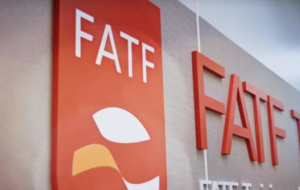Trade-Based Money Laundering (TBML)
Trade-Based Money Laundering (TBML) is a sophisticated method used by criminals to disguise the proceeds of illicit activities through legitimate international trade transactions.
 Written by Erling Andersen
Written by Erling Andersen
Definition: Trade-Based Money Laundering (TBML) is a sophisticated method used by criminals and illicit organizations to disguise the origins of illicit funds through legitimate trade transactions. It involves manipulating the value, quantity, or nature of goods being traded to facilitate the movement of illicit funds across borders. As a form of money laundering! TBML poses significant challenges to anti-money laundering! (AML) efforts worldwide.
Historical View
TBML has a long history, with instances dating back several decades. In the 1980s, the rise of globalization and international trade created new opportunities for money launderers. Criminal organizations recognized the potential of trade transactions as a means to move illicit funds across borders without arousing suspicion. TBML became a favored method due to its complexity and ability to exploit gaps in regulatory systems.
During the 1990s, law enforcement agencies and regulatory bodies began to take notice of TBML and its impact on global financial systems. The Financial Action Task Force (FATF), an intergovernmental organization focused on combating money laundering! and terrorist financing, highlighted the risks associated with TBML in its recommendations. The growing recognition of TBML as a significant AML concern led to the implementation of stricter regulations! and increased scrutiny of trade transactions.
Practical Examples
- Overvaluation of Goods: In a typical TBML scheme, criminals manipulate trade invoices by overvaluing the goods being traded. By inflating the price, they can move excess funds across borders, effectively layering and concealing the illicit origin of the money.
- Underinvoicing: Another common TBML technique involves deliberately underreporting the value of goods in trade transactions. By undervaluing the goods, criminals can transfer funds disguised as payments for legitimate trade, effectively integrating illicit funds into the financial system.
- Falsified Documentation: TBML often relies on the creation of fake invoices. Also bills of lading, and other trade-related documents. These fraudulent documents serve to misrepresent the nature and value of the goods being traded, facilitating the laundering! of illicit funds.
- Overlapping Trade Networks: Criminal organizations establish complex trade networks involving multiple companies across various jurisdictions. Through a series of interrelated trade transactions, funds are moved between entities, making it challenging to trace the illicit flows.
- Trade-Based Smuggling: TBML is frequently associated with smuggling activities. Criminals use legitimate trade channels to smuggle illicit goods, such as narcotics or counterfeit products, while using trade transactions to launder the proceeds generated from these illegal activities.
- Invoice Manipulation in Free Trade Zones: Free trade zones (FTZs) offer attractive opportunities for TBML due to relaxed customs controls and reporting requirements. Criminals exploit these zones by manipulating trade invoices or misrepresenting the nature of the goods passing through FTZs.
- Shell Companies and Complex Structures: TBML often involves the use of shell companies! and complex corporate structures to disguise the beneficial ownership of assets and funds. These entities serve as conduits for illicit trade transactions, making it difficult to trace the true origin and destination of the funds.
“Trade-based money laundering is a growing threat to the global financial system, as it allows criminals and terrorists to move money across borders undetected.” – Financial Action Task Force (FATF).
- Trade Misinvoicing in Developing Countries: Developing countries are particularly vulnerable to TBML due to weak regulatory frameworks and inadequate trade oversight. Criminals exploit these vulnerabilities by engaging in trade misinvoicing, inflating or deflating the value of goods to facilitate the movement of illicit funds.
- Circular Trade: Circular trade involves a series of repetitive trade transactions, often involving the same set of goods. Criminals exploit circular trade to create a complex web of transactions, making it challenging to identify the illicit flows! and separate legitimate trade from money laundering! activities.
- Cryptocurrencies and TBML: The emergence of cryptocurrencies has introduced new challenges in combating TBML. Criminals utilize digital currencies to facilitate trade transactions, making it more difficult to trace the movement of funds! and identify the underlying illicit activities.

Statistics
- According to a report by Global Financial Integrity, the estimated value of illicit financial flows associated with TBML was around $2.2 trillion annually.
- The Financial Crimes Enforcement Network (FinCEN) reported a significant increase in Suspicious Activity Reports (SARs) related to TBML between 2014 and 2018, with a 16% year-on-year growth.
- A study by the International Monetary Fund (IMF) estimated that TBML accounts for approximately 80% of all illicit financial flows globally.
- The United Nations Office on Drugs and Crime (UNODC) reported that TBML is a favored method for money launderers, representing a substantial portion of global money laundering! activities.
- Europol, the law enforcement agency of the European Union, highlighted that TBML has a significant impact on the European economy, with estimated losses reaching billions of euros annually.
“Trade-based money laundering is a complex and sophisticated form of financial crime that involves the use of international trade to disguise the proceeds of illicit activities.” – United Nations Office on Drugs and Crime (UNODC).
- The FATF estimates that TBML affects both developed and developing countries, undermining economic stability and hampering legitimate trade.
- The World Customs Organization (WCO) reports that TBML poses a particular challenge to customs authorities due to its complex nature and the need for international cooperation to effectively address the issue.
- The United States Department of State, in its International Narcotics Control Strategy Report, identified TBML as a priority area for combating money laundering! and emphasized the need for coordinated efforts to tackle this threat.
- A study conducted by Global Financial Integrity estimated that the Asia-Pacific region experiences the highest levels of TBML, accounting for over 40% of global illicit financial flows associated with trade.
- The Egmont Group, an international network of financial intelligence units, emphasizes the importance of information sharing and cooperation among countries to combat TBML effectively.
Incidents
- The Zhenli Ye Gon Case: Zhenli Ye Gon, a Chinese-Mexican businessman, was involved in a massive TBML operation, using a pharmaceutical company as a front to launder drug proceeds. The case highlighted the complexity and scale of TBML schemes.
- Operation Iron Fist: This international law enforcement operation targeted a TBML network that facilitated the laundering! of drug proceeds through trade transactions. It resulted in the arrest of multiple individuals involved in the illicit scheme.
- The Wachovia Bank Case: Wachovia Bank, now a part of Wells Fargo, faced penalties for its involvement in processing funds related to TBML. The case highlighted the role of financial institutions in facilitating money laundering! through trade transactions.
- The Panama Papers: While not solely focused on TBML, the leak of the Panama Papers revealed the use of offshore companies and complex trade structures to facilitate illicit financial flows, including TBML-related activities.
- The Glencore Case: The commodities trading firm Glencore faced scrutiny for potential TBML violations in its business dealings. The case highlighted the challenges faced by multinational corporations in mitigating TBML risks across complex supply chains.
“Trade-based money laundering is a significant risk for banks and financial institutions, as it can be difficult to detect and may involve multiple parties and jurisdictions.” – Wolfsberg Group.
- The Danske Bank Scandal: Danske Bank, one of the largest financial institutions in Denmark, faced a money laundering! scandal involving significant TBML-related activities. The case underscored the importance of robust AML controls within banks to prevent TBML.
- The Gold Smuggling Case in India: India has experienced numerous incidents of gold smuggling linked to TBML. Criminals exploit the country’s high demand for gold to move illicit funds and evade detection.
- The Hawala System: The Hawala system, an informal money transfer system prevalent in parts of Asia. Also the Middle East, and Africa, has been associated with TBML activities. Criminals leverage the system to move funds internationally while circumventing traditional banking channels.
- The Car Export Scheme in South America: Criminal networks in South America have been involved in TBML schemes using the export of cars as a cover for money laundering. Fraudulent invoices and inflated vehicle prices are used to conceal illicit funds.
- The Diamond Trade and TBML: The diamond trade, particularly in regions like Africa, has been susceptible to TBML due to the high-value nature of the goods and the complexity of the supply chain. Criminals exploit this industry to launder illicit funds.
The Future
- Enhanced Technology Solutions: The future of combating TBML lies in advanced technologies such as artificial intelligence, machine learning, and blockchain. These innovations can help identify suspicious trade patterns. Also detect fraudulent documents, and enhance overall AML compliance.
- Strengthened Regulatory Frameworks: Governments and international bodies will continue to strengthen AML regulations to address the specific challenges posed by TBML. This includes increased collaboration between regulatory agencies. Also enhanced due diligence requirements, and improved data sharing mechanisms.
- International Cooperation: The fight against TBML requires global cooperation and information sharing among law enforcement agencies. Also financial institutions, and businesses. Enhanced international collaboration will enable more effective detection and prevention of TBML activities.
- Heightened Risk Awareness: Businesses across industries will become more vigilant in identifying TBML risks within their supply chains and trade transactions. Increased awareness and robust risk assessment mechanisms will help prevent unwitting involvement in TBML schemes.
- Focus on Non-Financial Sectors: While financial institutions have made significant progress in AML compliance, future efforts will also target non-financial sectors, such as professional services. Also commodities trading, and e-commerce platforms, where TBML vulnerabilities exist.
“Trade-based money laundering is a major concern for law enforcement agencies around the world, as it is often used by organized crime groups to fund their operations and evade detection.” – U.S. Department of Justice.
- Integration of Big Data Analytics: The analysis of vast amounts of trade data will play a crucial role in identifying patterns and anomalies indicative of TBML. The integration of big data analytics tools into AML systems will strengthen detection capabilities.
- Collaboration with Technology Providers: AML software providers, like Kyros AML Data Suite, will play an instrumental role in assisting businesses and financial institutions in their fight against TBML. Advanced AML solutions will enable real-time monitoring. Also automated transaction screening, and suspicious activity detection.
- Greater Focus on Public-Private Partnerships: Governments. Also law enforcement agencies, and the private sector will forge stronger partnerships to combat TBML collectively. Sharing expertise. Also resources, and intelligence will result in more comprehensive and effective AML strategies.
- Continued Evolution of TBML Techniques: As AML measures evolve, criminals will adapt their TBML techniques to exploit new vulnerabilities. The future will witness the emergence of innovative methods and technologies used by money launderers, necessitating ongoing vigilance and adaptability.
- The Role of Kyros AML Data Suite: Kyros AML Data Suite, a leading AML compliance software, offers comprehensive solutions to combat TBML. With its advanced analytics. Also risk assessment tools, and transaction monitoring capabilities, Kyros AML Data Suite assists businesses in staying ahead of evolving TBML threats.
Explore the Power of Kyros AML Data Suite
In conclusion, Trade-Based Money Laundering! (TBML) poses significant challenges to AML efforts globally. Its historical prevalence, practical examples alarming statistics. Also notable incidents, and future implications all emphasize the need for robust AML measures. By leveraging technology. Also strengthening regulations. Also fostering international cooperation, and partnering with advanced AML software providers like Kyros AML Data Suite, businesses and financial institutions can effectively combat TBML and safeguard the integrity of the global financial system.
Conclusion
Trade-Based Money Laundering! (TBML) remains a significant challenge for the global financial system. The historical perspective, practical examples, alarming statistics, and real incidents discussed in this article highlight the pervasive nature of TBML and its detrimental impact on legitimate trade.
As the future unfolds, concerted efforts must be made to combat TBML through innovative technologies, robust regulations. Also international collaboration, and the adoption of advanced AML compliance solutions like Kyros AML Data Suite. By staying vigilant and proactive. Also financial institutions and regulatory authorities can effectively combat TBML and protect the integrity of the global financial system.
Share article on


